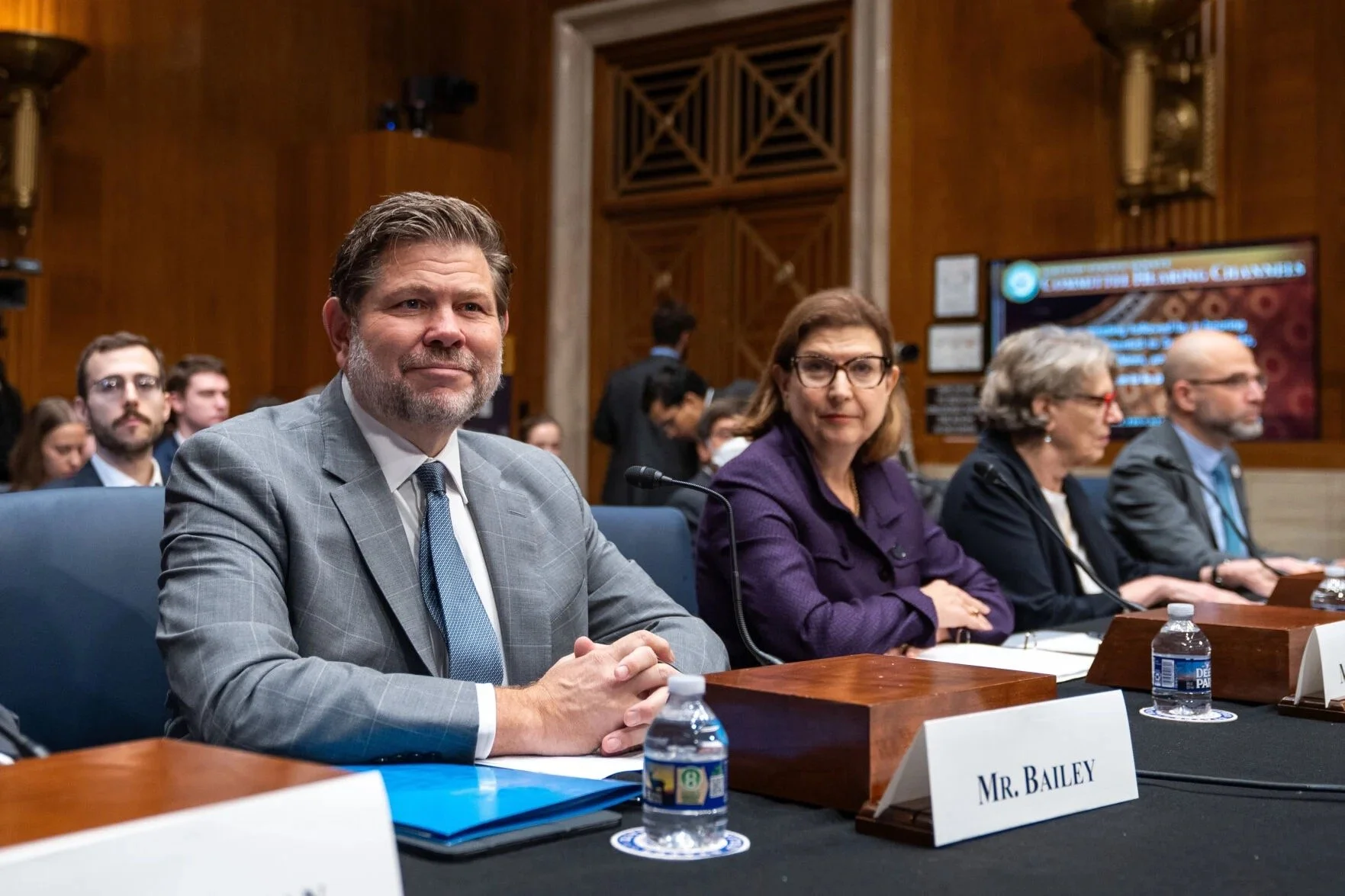Senate leaders are expected to release updated text on a slimmed-down set of bills to bolster the US semiconductor chip industry. The measures will likely include $52 billion in subsidies and an investment tax credit to boost US manufacturing, but the rest of the Bipartisan Innovation Act (BIA) remains in limbo at a time when more urgent action is needed. Strengthening America’s leadership in science and innovation tomorrow will depend on three crucial areas of investments needed today in bolstering semiconductor manufacturing, boosting federal R&D, and addressing the talent gap.
American Space Achievements: Lessons from the Past Year
The past year was filled with incredible technological breakthroughs and moments of inspiration. We should celebrate these achievements, but also use them as a call for continued action to strengthen the pipelines that enable innovation. Federal policymakers and regulators should double down on using public-private partnerships and creating more regulatory room to test and scale innovations. One important element of this work should involve reviewing existing regulatory processes that may need modernization.
Are Federal Broadband Grants Taxable?
Casey Lide of Keller and Heckman recently wrote a blog post warning that federal grant funding might be considered taxable income by the IRS. This unexpected tax liability could severely curtail the impact of federal grant programs designed to expand affordable broadband connectivity and close the digital divide. The Biden administration is weighing available options for using executive authority to exempt these projects, but a better remedy is for Congress to pass a clean and clear extension.
Reset Strategies Now, Prepare for the Future
The rapidly receding Omicron wave of Covid-19 presents a moment to pause and reflect on our pandemic strategy and make needed and, in some cases, long overdue adjustments. This is also the time to prepare for future pandemic risks. As we move forward, it is important for policymakers and health authorities to review which measures have worked, which policies have fallen short, and which actions have produced too little public-health benefit relative to the costs they have imposed on families and, too often, on children.
America’s public schools and non-profits will play a crucial role in resettling Afghan refugees
The U.S. government bears much of the responsibility for the unfolding refugee crisis. Schools must have the resources and support they need to help Afghan families resettle and adjust to their new homes. These families put their lives on the line to advance American interests in Afghanistan. Let’s honor that sacrifice by helping them rebuild their lives here in the U.S.
COVID-19 Will Continue to Disrupt Schools, But We Can Manage It
Some excerpts from my recent piece in Newsweek outlining reasons why we should prepare for a third year of interrupted learning in schools. I then outline five steps we can take to help manage the challenges and uncertainty.
Vaccinating America’s Children Depends on Parents, Not the FDA
The FDA’s approval of Pfizer’s COVID-19 vaccine for 12 to 15-year-olds is an important step in the nation’s path toward herd immunity and for providing an additional layer of protection that will make it easier for teenagers to attend summer camp and in-person schooling in the fall. However, the greatest challenge to getting 17 million teens vaccinated may not be FDA approval but instead parental approval. The Kaiser Family Foundation’s Vaccine Monitor found only 3 in 10 parents say they will get their child vaccinated as soon as a vaccine is available. Nearly 25 percent will wait to see how it’s working, 18 percent will vaccinate only if their child’s school requires it, and 23 percent say they will definitely not get their child vaccinated.
CDC Adds to Growing Body of Research Showing How Schools Can Reopen
It is very likely that we’ve overestimated the risk of sending children back into the classroom and underestimated the consequences of keeping them at home. It’s time to adapt our strategies to better reflect on the lessons learned over the last 10 months. It’s time to safely and responsibly give students the option of coming back to school.
To Reopen Learning, Give Students the Internet
An estimated 21 million Americans lack a high-speed internet connection. More than 1 in 10 students report they don’t have a laptop or desktop at home. And the digital divide is even more prevalent in our most vulnerable communities. The Census Household Pulse Survey showed that, as of June, 15% of black students lacked reliable internet connectivity, and 21% lacked a device at home. Twenty-one percent of low-income children lack the connectivity needed to benefit from either online or hybrid learning.
That’s why it is urgent for Congress to use the next phase of fiscal relief to bridge this divide. Democratic Massachusetts Sen. Ed Markey has proposed $4 billion for the E-rate program, which helps to connect low-income children at home. Republicans, Sen. Roger Wicker of Mississippi and Rep. Greg Walden of Oregon, have issued a Digital Equity Framework that calls on giving students access to broadband to complete their homework remotely as well as expanding broadband access to minority and low-income communities.
In the News
Will Parents Let Their Children Return to Reopened Schools?
On the same day of the White House forum, the nation saw a new single day record of COVID-19 cases and spiking infection numbers across 37 states over the past two weeks. States are busy preparing technical plans for schools, but may be missing the important health issues they must address in order to instill parental trust. Unless leaders quickly respond to these cautious parents, schools will open their doors but children will stay at home.
Reopening Resilient Schools
An essay I wrote for EducationNext describing how we can approach safely reopen schools. I cover what the most recent scientific studies tell us about risks for children as well as if they are super spreaders of COVID-19. Other issues include how to address SEL, academic learning loss, and improving distance learning to provide a better experience for both teachers and students next year.
Here’s How Michigan’s Schools Can Reopen This Fall
This disruption to the school year has created broad academic challenges for students, particularly those most vulnerable before the crisis occurred. Schools may need to extend the school day or year to help students catch up on lost instruction. Michigan should commit now to ensure their assessments are administered in the spring of 2021 to help identify students who need extra help and better target assistance to close learning gaps. They should also commit to providing the social and emotional learning practices needed to help students as they make their way through this new normal.
In The News
What To Do About the Fall's Looming School Personnel Crisis
Everyone was taken by surprise when schools closed their doors to over 55 million students this spring. When schools reopen, there will be important accommodations to protect students and staff. But some teachers and school personnel — as many as half a million — may not be able to return to school building due to being more at risk for contracting COVID-19. Schools need to adequately prepare for what can only be described as a mounting school personnel crisis in the fall.
A Blueprint for Reopening America’s Schools This Fall
We shouldn’t strive to return to “normal,” but rather to attain something better. Adapting to the challenges of COVID-19 gives America’s schools the opportunity to provide what is uniquely possible in the classroom while seeking new ways to fully use technology and community partnerships. There has never been a better time for schools to run their own pilots of blended learning, personalized learning and competency-based learning. Schools can meld the best of the brick-and-mortar experience of school with digital content, online courses and cloud-based services. Personalized learning could become the way we approach teaching and learning moving forward.
Here Are Five Steps Schools Can Take to Reopen Schools
In many communities, reopening schools will not mean business as usual. Just what will it take to get schools ready, amidst enormous uncertainty?
To tackle that question, we worked with a task force of 19 bipartisan educational leaders — including former state chiefs, superintendents, federal education officials, and school leaders — to develop a blueprint to help states, communities, and schools address these challenges. Here are five key places to start.
A Blueprint for Reopening This Fall: What Will It Take to Get Schools Ready?
Families and communities need America’s schools to be ready to reopen as soon as public-health officials signal that it’s safe. The nation has recently been reminded just how vital schools are. They connect students with peers and mentors, channel youthful energy into productive pursuits, teach essential academic skills and knowledge, and give overwhelmed parents room to breathe and work. Today’s packets and remote learning efforts are at best an inferior substitute for a small portion of this.
COVID-19 Closed Schools. When Should They Reopen?
The Stimulus Package Will Help Families, But It Doesn't Go Far Enough
Recognizing these additional costs many low-income families are now facing, the U.S. Congress should go further in the cash benefit program and provide $1,000 per child. The benefit should have an income cap, $90,000 for singles and $180,000 for couples, so that it targets assistance to those who need it the most. And it should not be a one-time payment, but rather a monthly benefit with clear triggers, such as public-health emergency declarations and extended school closures, to continue the payments until this crisis has abated.
Congress should not wait until the crisis worsens, given the needs families are facing right now that they hadn’t even imagined just two weeks ago. This direct cash assistance could make the difference between a child continuing their studies or falling behind.
























